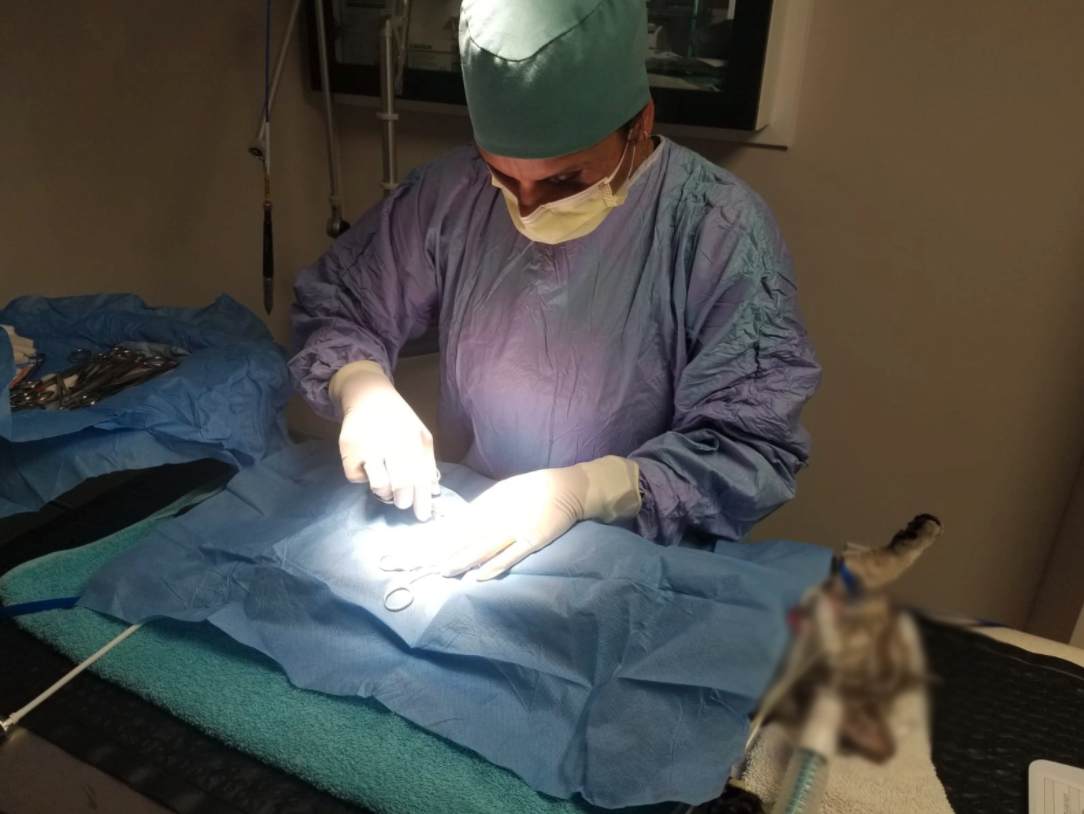SURGERY & ANESTHESIA
At Balmy Beach Pet Hospital, we understand that pet owners have anxiety and often a lot of questions about Anesthesia. They worry whether their pet will be able to tolerate anesthesia. We would like to assure you that anesthesia can be done in a very safe and effective manner, especially with the drugs that are now available to us.
Your pet MUST arrive FASTED for 10-12 hours (shorter fasting times for sick and pediatric patients). This ensures that your pet will not regurgitate and aspirate stomach contents while they are under anesthesia. We request that you don’t feed your pet after dinner the night before the scheduled anesthetic procedure. You may leave a small amount of water overnight.
- First step of anesthesia is called Premedication. This involves giving your pet a combination of drugs, usually three, to induce sedation. This combination also contains a pain drug to provide pre-emptive analgesia, or in simpler terms, to control pain before it starts and also enhances the sedating effect of other drugs. This injection is given usually in the back muscles.
- After this injection, we wait about 15-20 minutes for your pet to get sedated and then we place an intravenous catheter in a peripheral vein. Having intravenous access is very important as it allows us to quickly act in case of an emergency, to give injectable drugs to get them into a deeper state of anesthesia and to administer intravenous fluids to help support their cardiovascular system during surgery.
- Once an IV catheter has been placed, we are ready to proceed with the second step of anesthesia called Induction Anesthesia. This is often an injectable drug, such as Propofol, Alfaxalone, or combinations of drugs, which are given slowly through the IV catheter to the point that we can place an endotracheal tube into the pet’s airways.
- The effect of injectable drugs is short-lived and this is why the patient is transferred to the anesthetic machine where they get oxygen and inhalant gas to keep them asleep. This is the third step of anesthesia called Maintenance Anesthesia. The anesthetic machine allows to easily change the depth of anesthesia with the turn of a dial. Patients also wake up quickly so they are ready to go home relatively quickly. The commonly used inhalant gases are Isoflurane and Sevoflurane.
- We then use Local anesthetics to help block pain and feeling to the area of surgery.
- Now that your pet has been fully anesthetized, we work vigilantly to monitor your pet while asleep. You pet is also hooked up to monitoring equipment and we record their vital parameters including heart rate, respiratory rate, oxygenation rate, blood pressure and temperature every 5-10 minutes. Since we have this equipment, we are able to notice the smallest changes, allowing us to keep your pets safe.
If you have any questions about our anesthetics or monitoring equipment, don’t hesitate to contact us today at (647) 983-2400.


